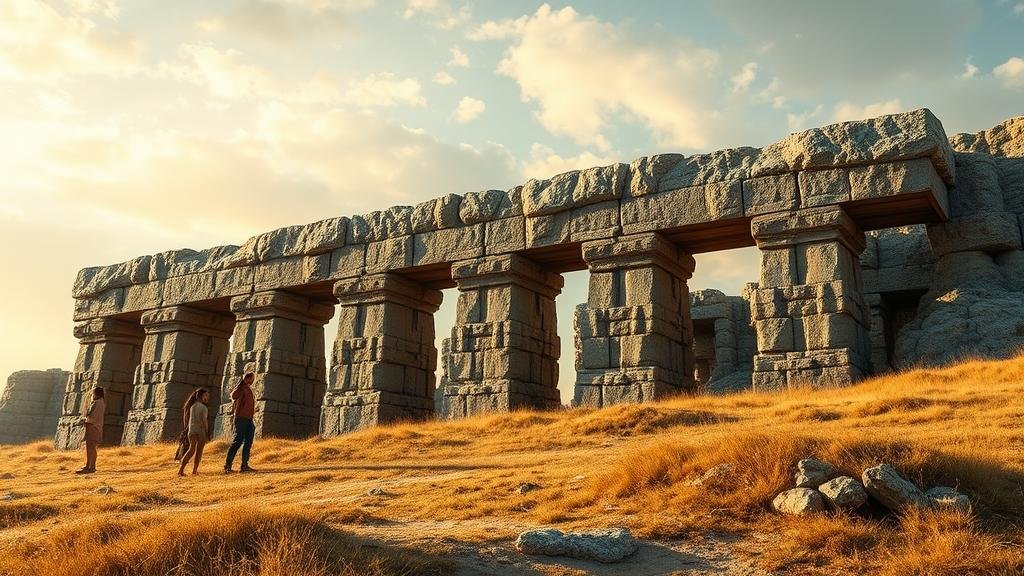Investigating legends of giants and their potential archeological origins.
Investigating Legends of Giants and Their Potential Archeological Origins
The existence of giants has captivated human imagination for centuries, featuring prominently in the folklore of diverse cultures from around the world. But what if these legends have roots in historical events or archaeological findings? This article delves into the origins of giant myths, exploring potential archaeological evidence and how these stories may have developed over time.
The Origins of Giant Myths
Legends of giants often intertwine with creation myths, hero stories, and explanations for unexplainable geological formations. Most cultures have their own giant figures. For example:
- In Greek mythology, the Titans were colossal beings who fought against the Olympian gods.
- In Native American folklore, beings like the Nephilim are said to have roamed the earth.
- James Hutton’s 18th-century observations of Earth’s geological processes may have inspired interpretations of large human-like figures as ancient giants.
These myths often served to explain natural phenomena, instilling wonder and fear in the societies that nurtured them. But can these stories be linked to archaeological evidence?
Archaeological Evidence and Findings
A surprising number of archaeological findings have been interpreted as potential evidence supporting the existence of giants. Throughout history, reports have surfaced detailing the discovery of unusually large human skeletons. Here are some notable examples:
- 1800s, West Virginia: In 1884, miners reportedly uncovered a grave containing a skeleton measuring over 8 feet tall, leading to discussions about the existence of “giants†among early settlers.
- 1911, Lovelock Cave: Archaeologists discovered mummified remains of individuals estimated to be over 7 feet tall alongside artifacts that suggested they belonged to a unique culture.
- 2017, United States: An excavation in the Pacific Northwest uncovered prehistoric bones that sparked interest in the implications regarding the height of early inhabitants.
While many of these claims have not been substantiated by mainstream archaeology, they indicate a cultural memory or misinterpretation of burial practices and human remains tied to larger-than-life legends.
Scientific Explanations for Giant Legends
There are several scientific theories explaining how these legends may have originated:
- Paleoanthropological Perspective: The discovery of large hominids such as Gigantopithecus, a prehistoric ape that stood up to 10 feet tall, suggests that ancient peoples could have encountered remains and interpreted them through a mythological lens.
- Genetic Anomalies: Instances of gigantism and acromegaly in modern humans can create individuals of remarkable height. The stories may be remnants of encounters with persons suffering from these conditions.
- Misinterpretation of Fossils: Fossilized dinosaur bones or large mammals may also spark imaginations, leading to inflated tales of pre-historic humans and their monstrous neighbors.
Global Perspectives on Giants
Giants appear in folklore across the globe, and their narratives differ greatly based on cultural context. Consider the following:
- In India, the Ramayana describes formidable giants called “Rakshasas†battling the gods and heroes.
- In Norse mythology, giants called “Jotnar†play a central role in creation myths, paving the way for the eventual Ragnarök, the end of the world.
- Hawaiian mythology features “MÄui,†a demigod who possesses superhuman abilities that help shape the islands.
These legends often reflect societal fears and ideals, revealing as much about the cultures that created them as about the giants themselves.
Conclusion: The Intersection of Myth and Evidence
While many giant myths may not have a basis in literal truth, they serve as powerful cultural stories that explore human fears, explain the unexplainable, and elevate the human experience above reality. Despite the lack of solid archaeological evidence confirming the existence of giants, the persistent nature of these legends suggests a human tendency to mythologize encounters with the unknown.
To wrap up, while the search for giants may lead to a treasure trove of intriguing stories and historical insights, it is essential to approach these legends with a critical perspective. Continued exploration both in archaeology and human psychology may one day parse the truths from the myths, providing a richer understanding of our shared history.
As you delve into this topic, consider reflecting on how our modern myths and legends might similarly shape cultural narratives for future generations.


